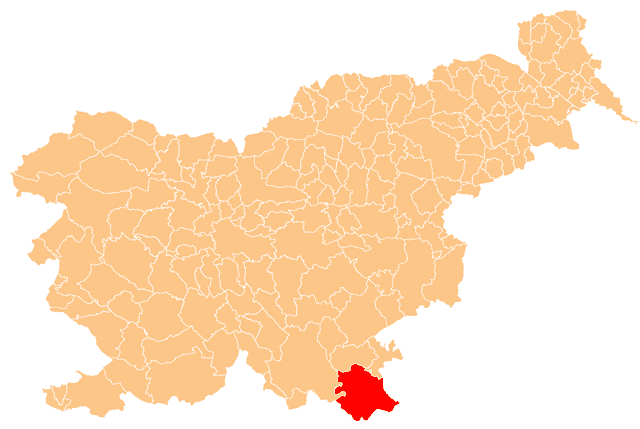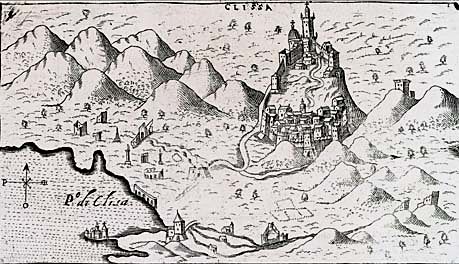|
Serbs Of White Carniola
Apart from the immigrant community that makes up the vast majority of Serbs in Slovenia, there are a few villages in the southern region of White Carniola inhabited by descendants of Serbs (Uskoks) that fled from the Ottoman Empire in the 16th century, beginning in 1528 and permanent by 1593. These immigrants founded settlements in which descendants of Serbs live to these days: Bojanci, Marindol, Paunoviči, Adlešiči, Žuniči, Miliči and others. The majority of the community ( sl, Srbi v Beli krajini) have kept the Serbian Orthodox faith and their distinctive culture, although they have been almost completely assimilated to their Slovene-speaking environment. Some of them became Uniate (Eastern Catholic) in the 17th and 18th century. History With the Ottoman conquest of Serbian territories, groups of Serbs fled to the north or west; of the western migrational groups, some settled in White Carniola and Žumberak. In September 1597, with the fall of Slatina, Croatia, Slatina, some ... [...More Info...] [...Related Items...] OR: [Wikipedia] [Google] [Baidu] |
Črnomelj
Črnomelj (; in older sources also ''Černomelj'', german: Tschernembl''Leksikon občin kraljestev in dežel zastopanih v državnem zboru,'' vol. 6: ''Kranjsko''. 1906. Vienna: C. Kr. Dvorna in Državna Tiskarna, p. 4.) is a town in southeastern Slovenia. It is the seat of the Municipality of Črnomelj. It lies on the left bank of the Lahinja and Dobličica rivers. The municipality is at the heart of the area of White Carniola, the southeastern part of the traditional region of Lower Carniola. It is now included in the Southeast Slovenia Statistical Region. It includes the hamlets of Čardak, Kočevje, Kozji Plac, Loka, and Nova Loka. Name Črnomelj was first attested in written sources in 1228 as ''Schirnomel'' (and as ''Zernomel'' in 1263, ''Zermenli'' in 1277, and ''Tscherneml'' in 1490). The name is derived from ''*Čьrnomľь'', based on the hypocorism ''*Čьrnomъ'', thus originally meaning 'Črnom's settlement'. In the modern German the name was ''Tschernembl''. Until 19 ... [...More Info...] [...Related Items...] OR: [Wikipedia] [Google] [Baidu] |
Moravice, Croatia
Moravice (formerly known as Komorske Moravice until 1919, thereafter as Srpske Moravice until 1991) ( sr-Cyrl, Моравице) is a settlement in north-western Croatia, situated at the far east of the mountainous region of Gorski kotar in the Primorje-Gorski Kotar County. It is part of the Vrbovsko municipality. The population is 664 (as of the 2011 census). History The Vlachs were settled in Moravice 1585 on the proposal general of Karlovac Josip Turn.Mužić Ivan; (2010) ''Vlasi u starijoj hrvatskoj historiografiji'' (in Croatian) p. 47; Povijesni prilozi, 39 Vlachs were Slavic shepherds or foreigners who were settled through Statuta Vlachorum on this territory. Demographics : Notable natives and residents * Danilo Jakšić - 18th century Serb Orthodox bishop * Slavko Kvaternik - one of the founders of the Ustaša movement, and a Nazi collaborator during the Second World War * Pero Kvrgić - actor * Đorđe Petrović - painter * Vasilije Matić - forestry expert * ... [...More Info...] [...Related Items...] OR: [Wikipedia] [Google] [Baidu] |
Serbian Latin
Gaj's Latin alphabet ( sh-Latn-Cyrl, Gajeva latinica, separator=" / ", Гајева латиница}, ), also known as ( sh-Cyrl, абецеда, ) or ( sh-Cyrl, гајица, link=no, ), is the form of the Latin script used for writing Serbo-Croatian and all of its standard varieties: Bosnian, Croatian, Montenegrin, and Serbian. The alphabet was initially devised by Croatian linguist Ljudevit Gaj in 1835 during the Illyrian movement in ethnically Croatian parts of Austrian Empire. It was largely based on Jan Hus's Czech alphabet and was meant to serve as a unified orthography for three Croat-populated kingdoms within the Austrian Empire at the time, namely Croatia, Dalmatia and Slavonia, and their three dialect groups, Kajkavian, Chakavian and Shtokavian, which historically utilized different spelling rules. A slightly modified version of it was later adopted as the formal Latin writing system for the unified Serbo-Croatian standard language per the Vienna Literar ... [...More Info...] [...Related Items...] OR: [Wikipedia] [Google] [Baidu] |
Serbian Cyrillic
The Serbian Cyrillic alphabet ( sr, / , ) is a variation of the Cyrillic script used to write the Serbian language, updated in 1818 by Serbian linguist Vuk Karadžić. It is one of the two alphabets used to write standard modern Serbian, the other being Gaj's Latin alphabet. Karadžić based his alphabet on the previous Slavonic-Serbian script, following the principle of "write as you speak and read as it is written", removing obsolete letters and letters representing iotified vowels, introducing from the Latin alphabet instead, and adding several consonant letters for sounds specific to Serbian phonology. During the same period, linguists led by Ljudevit Gaj adapted the Latin alphabet, in use in western South Slavic areas, using the same principles. As a result of this joint effort, Serbian Cyrillic and Gaj's Latin alphabets for Serbian-Croatian have a complete one-to-one congruence, with the Latin digraphs Lj, Nj, and Dž counting as single letters. Karadžić's Cyril ... [...More Info...] [...Related Items...] OR: [Wikipedia] [Google] [Baidu] |
World War II
World War II or the Second World War, often abbreviated as WWII or WW2, was a world war that lasted from 1939 to 1945. It involved the vast majority of the world's countries—including all of the great powers—forming two opposing military alliances: the Allies and the Axis powers. World War II was a total war that directly involved more than 100 million personnel from more than 30 countries. The major participants in the war threw their entire economic, industrial, and scientific capabilities behind the war effort, blurring the distinction between civilian and military resources. Aircraft played a major role in the conflict, enabling the strategic bombing of population centres and deploying the only two nuclear weapons ever used in war. World War II was by far the deadliest conflict in human history; it resulted in 70 to 85 million fatalities, mostly among civilians. Tens of millions died due to genocides (including the Holocaust), starvation, ma ... [...More Info...] [...Related Items...] OR: [Wikipedia] [Google] [Baidu] |
Eastern Catholic Churches
The Eastern Catholic Churches or Oriental Catholic Churches, also called the Eastern-Rite Catholic Churches, Eastern Rite Catholicism, or simply the Eastern Churches, are 23 Eastern Christian autonomous (''sui iuris'') particular churches of the Catholic Church, in full communion with the Pope in Holy See, Rome. Although they are distinct theologically, liturgically, and historically from the Latin Church, they are all in full communion with it and with each other. Eastern Catholics are a distinct minority within the Catholic Church; of the 1.3 billion Catholics in communion with the Pope, approximately 18 million are members of the eastern churches. The majority of the Eastern Catholic Churches are groups that, at different points in the past, used to belong to the Eastern Orthodox Church, the Oriental Orthodoxy, Oriental Orthodox churches, or the historic Church of the East; these churches had various Schism in Christianity, schisms with the Catholic Church. The Eastern Catho ... [...More Info...] [...Related Items...] OR: [Wikipedia] [Google] [Baidu] |
Uskoks
The Uskoks ( hr, Uskoci, , singular: ; notes on naming) were irregular soldiers in Habsburg Croatia that inhabited areas on the eastern Adriatic coast and surrounding territories during the Ottoman wars in Europe. Bands of Uskoks fought a guerrilla war against the Ottomans, and they formed small units and rowed swift boats. Since the uskoks were checked on land and were rarely paid their annual subsidy, they resorted to acts of piracy. The exploits of the Uskoks contributed to a renewal of war between Venice and the Ottoman Empire (1571–1573). An extremely curious picture of contemporary manners is presented by the Venetian agents, whose reports on this war resemble a knightly chronicle of the Middle Ages. These chronicles contain information pertaining to single combats, tournaments and other chivalrous adventures. Many of these troops served abroad. After a series of incidents that escalated into the Uskok War (1615–1618), the Uskok activity in their stronghold of Sen ... [...More Info...] [...Related Items...] OR: [Wikipedia] [Google] [Baidu] |
Kupa River
The Kupa () or Kolpa ( or ; from la, Colapis in Roman times; hu, Kulpa) river, a right tributary of the Sava, forms a natural border between north-west Croatia and southeast Slovenia. It is long, with its border part having a length of and the rest located in Croatia. Name The name ''Colapis'', recorded in antiquity, is presumed to come from the Proto-Indo-European roots ''*quel-'' 'turn, meander' and ''*ap-'' 'water', meaning 'meandering water'. An alternative interpretation is ''*(s)kel-''/''*skul-'' 'shiny, bright', meaning 'clear river'. Course The Kupa originates in Croatia in the mountainous region of Gorski Kotar, northeast of Rijeka, in the area of Risnjak National Park. It flows a few kilometers eastwards, receives the small Čabranka River from the left, before reaching the Slovenian border. It then continues eastwards between the White Carniola region in the north and Central Croatia in the south. The Kupa receives influx from the river Lahinja from the left ... [...More Info...] [...Related Items...] OR: [Wikipedia] [Google] [Baidu] |







